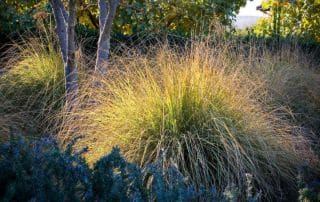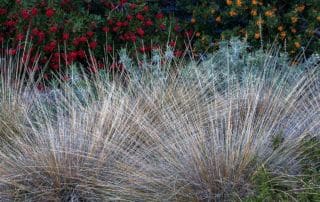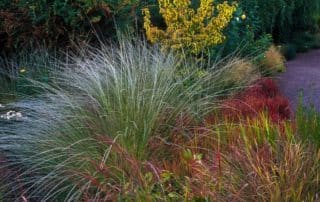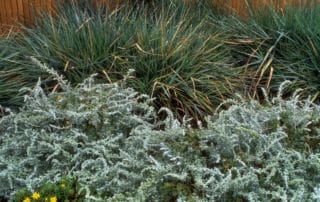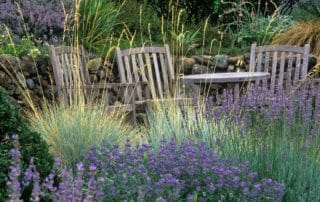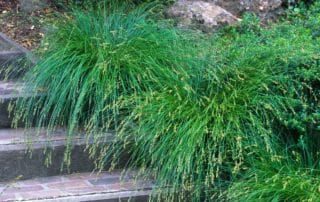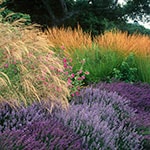Environmental Benefits of Perennial Grasses
Perennial grasses have long been popular garden subjects, usually for their aesthetic value -- the meadow effect when used in large drifts, the drama when backlit by the setting sun, the architectural beauty of those that retain their formal shape even into dormancy. Festuca mairei (Atlas fescue) catches afternoon light in a California garden There are, of course, other good reasons to use perennial grasses liberally in both private and public landscapes. Grasses are an integral part of many ecosystems and they provide many environmental benefits at local, regional, and global levels. Canada geese feed on


